It takes but a short one hour flight to go from Chiang Mai in Northern Thailand, to Luang Prabang, Laos. A tiny airport has been built to accommodate rising tourism in Luang Prabang, which flies one small plane (20 seater) per day between the two cities of Chiang Mai and Luang Prabang.
Perhaps if one takes the two and a half day “slow boat” ride down the Mekong, one has a chance to gradually unwind from the hustle and bustle of Thailand (even in a relatively mellow place like Chiang Mai) before reaching the ultimately laid back town of Luang Prabang. But we are impatient and want our Laotian experience to start NOW.
We are armed however, with a cultural tool in anticipation of shifting gears from Thailand to Laos: an Asian saying that essentially goes like this with regard to the all encompassing rice culture that binds the region:
– The Vietnamese PLANT the rice
– The Cambodians HARVEST the rice
– The Thai SELL the rice and
– The Lao people CONTEMPLATE the rice as it grows.
Laos has not sought to duplicate the “Asian Tigers” (Singapore, Korea, Viet Nam…) – those countries whose governments and people pursue double digit economic growth, seek to modernize as fast as possible, relinquish some of their ancestral cultures in pursuit of the almighty god of productivity.
Not so in Laos, we gather. We expect a rather “laid back”, contemplative culture. If Buddhism has a home, where meditation and living in the “here and now” is revered, it seems Laos is that home.
 |
| Forming a small peninsula, as shown on this antique map, the town of Luang Prabang enjoys the confluences of two rivers ~ the mighty Mekong river and the slower moving and smaller Nam Khan. |
 |
| Restaurants line the Mekong river street-side, and have decks available for those who prefer to eat “al fresco” and watch the slow river traffic go by. |
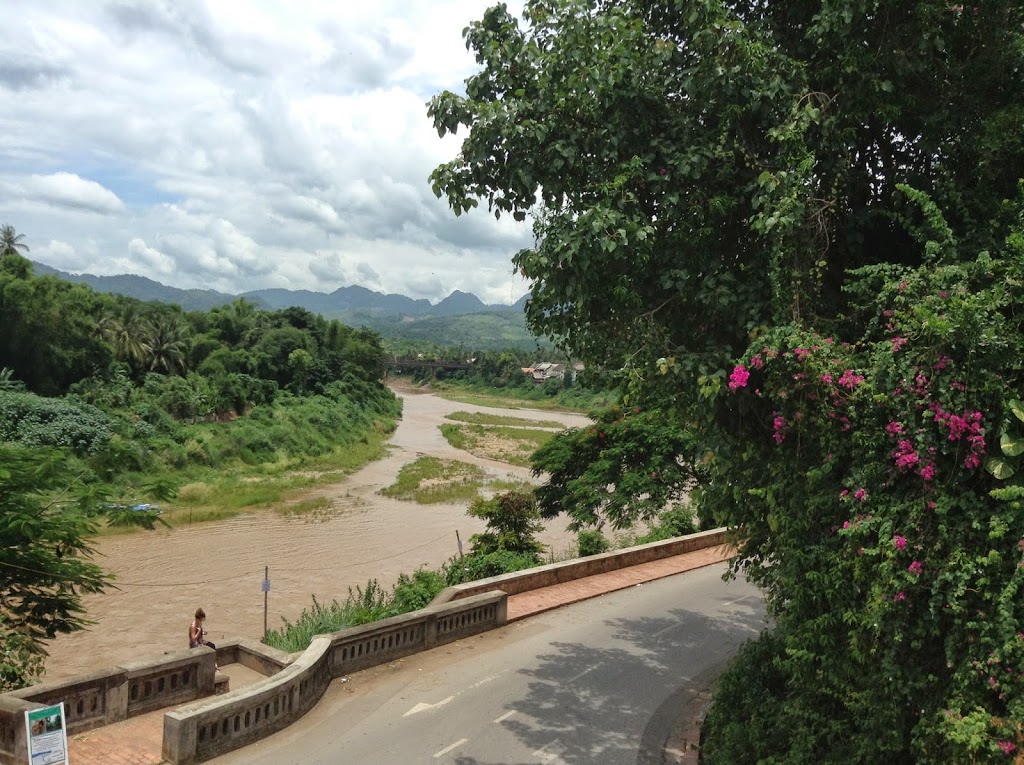 |
| A road lines the river front, so one can walk, drive, bike all around the peninsula, without leaving the waterfront. |
 |
| This small boat is about to “change gear” as it leaves the quiet and slow Nam Khan river to to merge into the faster flowing Mekong. |
Wedged in between these two rivers is the beautiful Luang Prabang. The architecture around town reveals interwoven influences: Grand residences in a classic French Provincial style, thick walled buildings with shuttered windows and pitched tiled roofs with balconies, combined with Lao traditional wooden construction, which showcases local woods in the interior and exterior of the house.
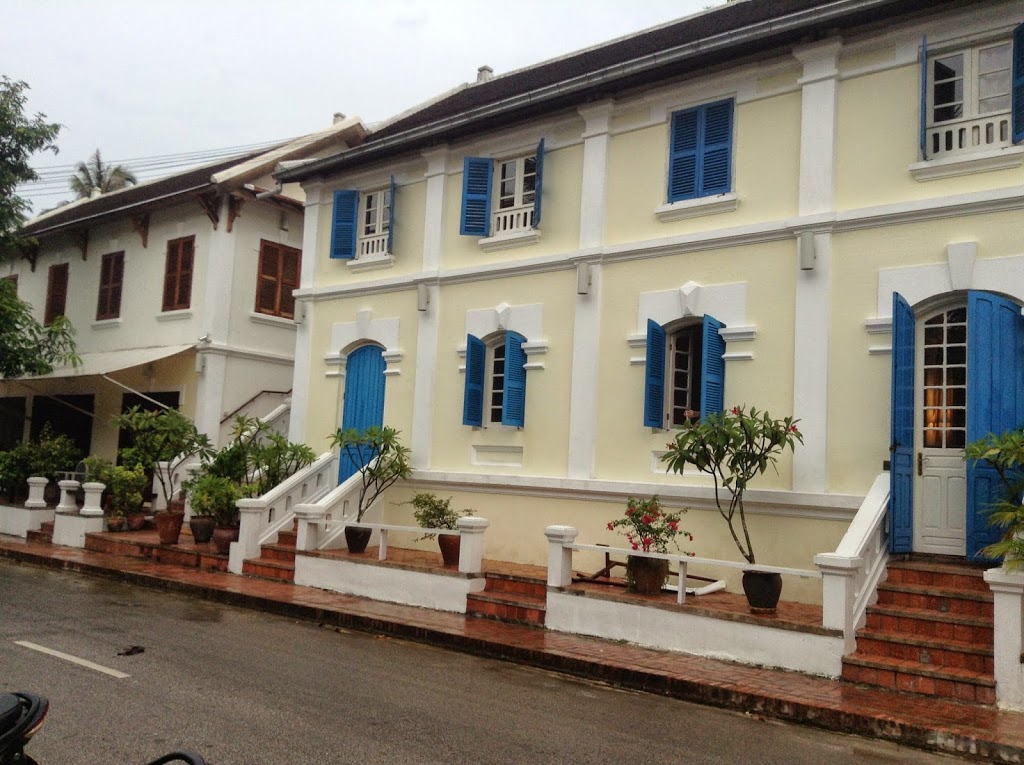 |
| Until 1995, when Laos “opened up to the world” and opened the door to international travelers and international investment, many of the grand buildings built at the height of French Colonial influence in Laos were crumbling over decades of neglect. Having become a UNESCO World Heritage Site, Luang Prabang has created the framework for investors to rebuild and restore their national architectural heritage. |
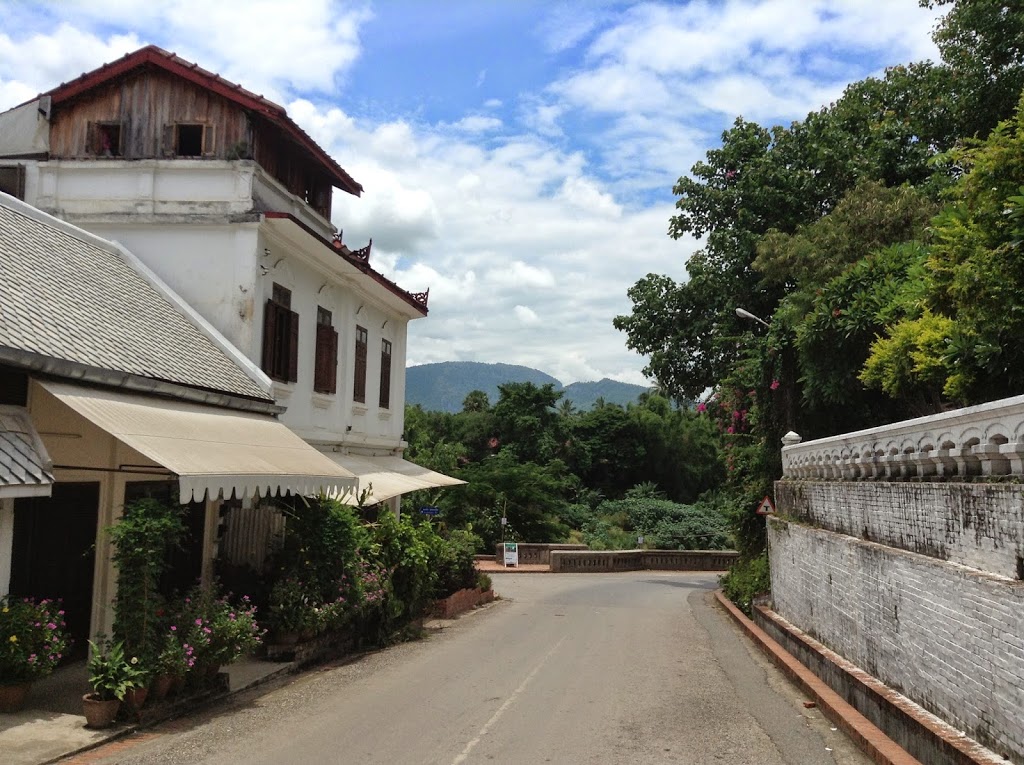 |
| A Lanna style wooden top floor combines with a bottom French construction, on a side street that runs into the Nam Khan river. |
 |
| The “Jewel of Laos” is particularly beautiful at night |
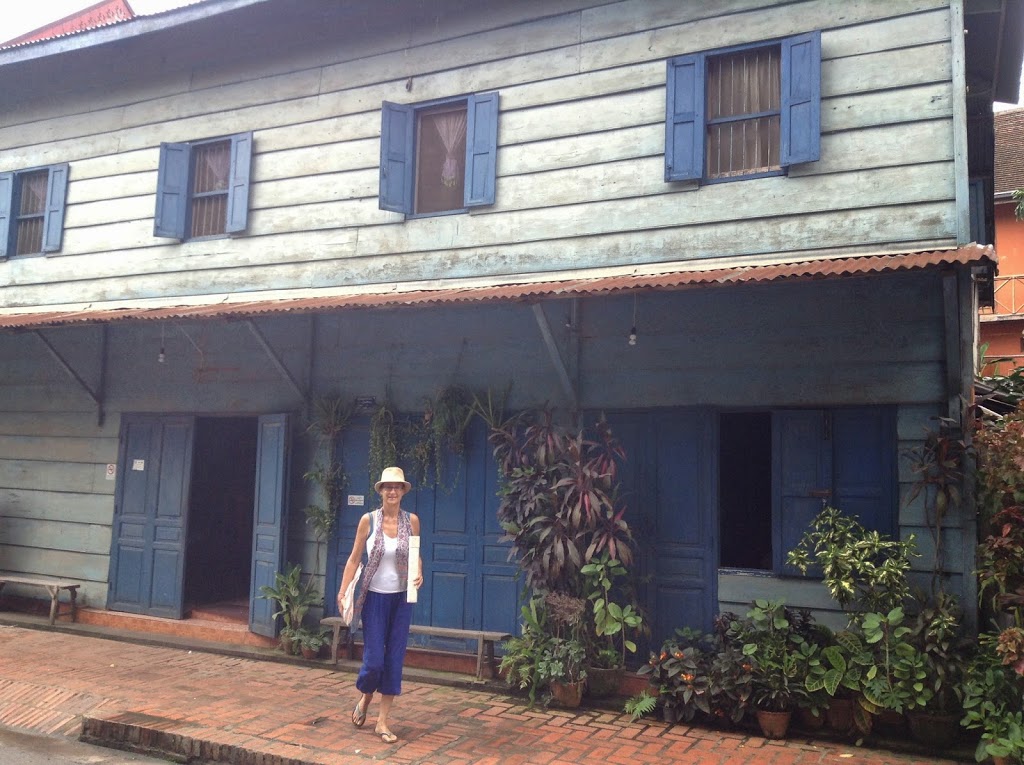 |
| Wooden houses along the river have beautiful pastel colors, like this one. |
 |
| One of several streets lined with Lanna wooden houses. |
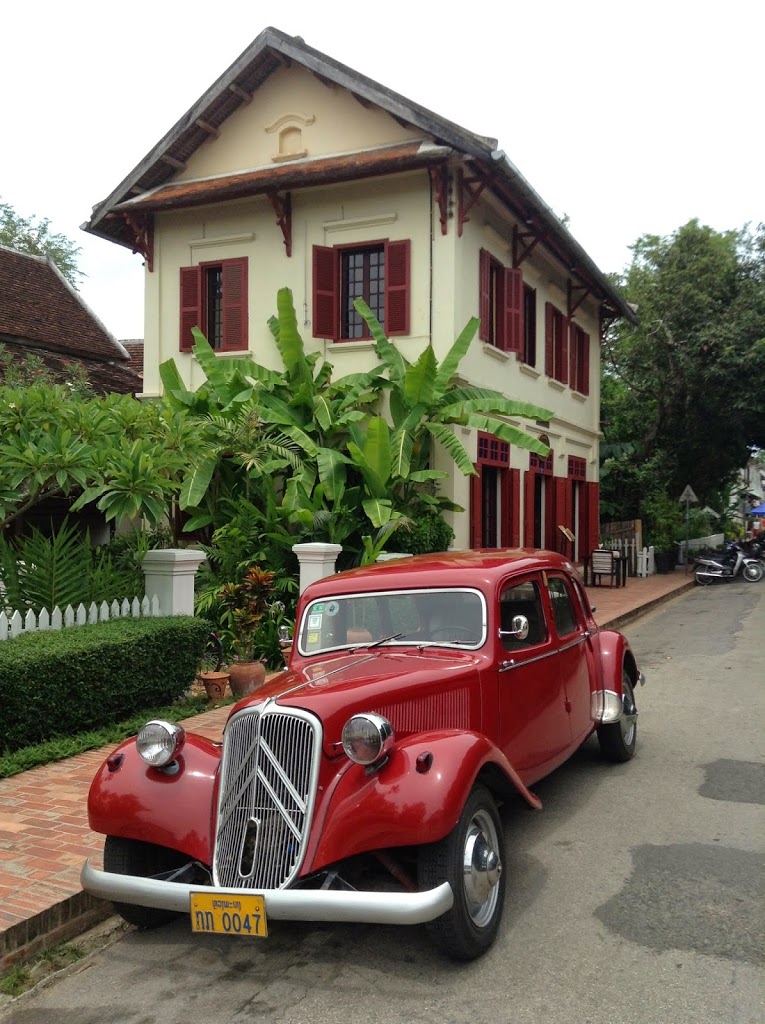 |
| Beautiful addition to the street. |
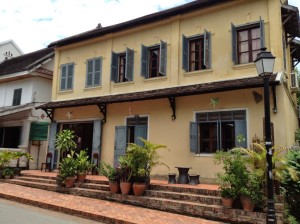 |
| Most of the grand homes have been converted to “guest houses”. We are fortunate to start our lives here in the low season. In November onward the serenity of the town gives way to a high season when tourists flock to Luang Prabang. For now… we enjoy the quiet beauty of the town. |
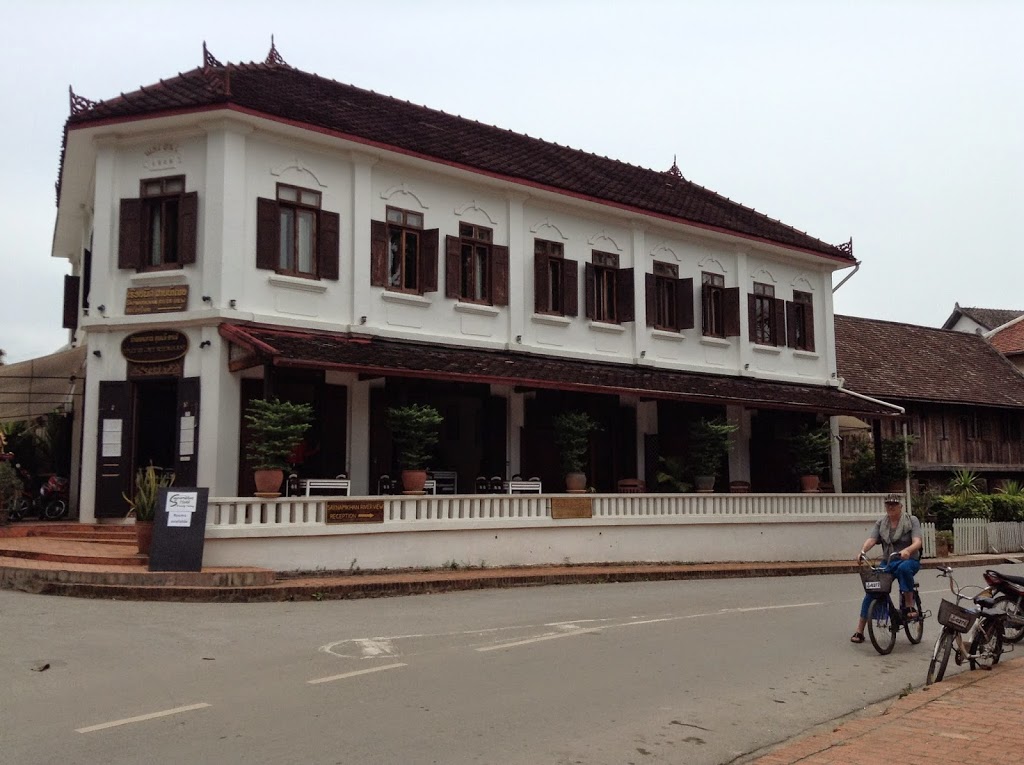 |
| Walking and riding a bike are the best modes of transportation around town. |
 |
| Some homes have yet to be restored. The further one goes from the center, the less restoration has been done. The unrestored buildings have a charm of their own. |
OK, next house is where we now live.
Directly across from Xieng Muan Buddhist temple, this refurbished two story 100 year old French residence has high ceilings, lots of windows, wooden floors and is half a block from the Mekong river.
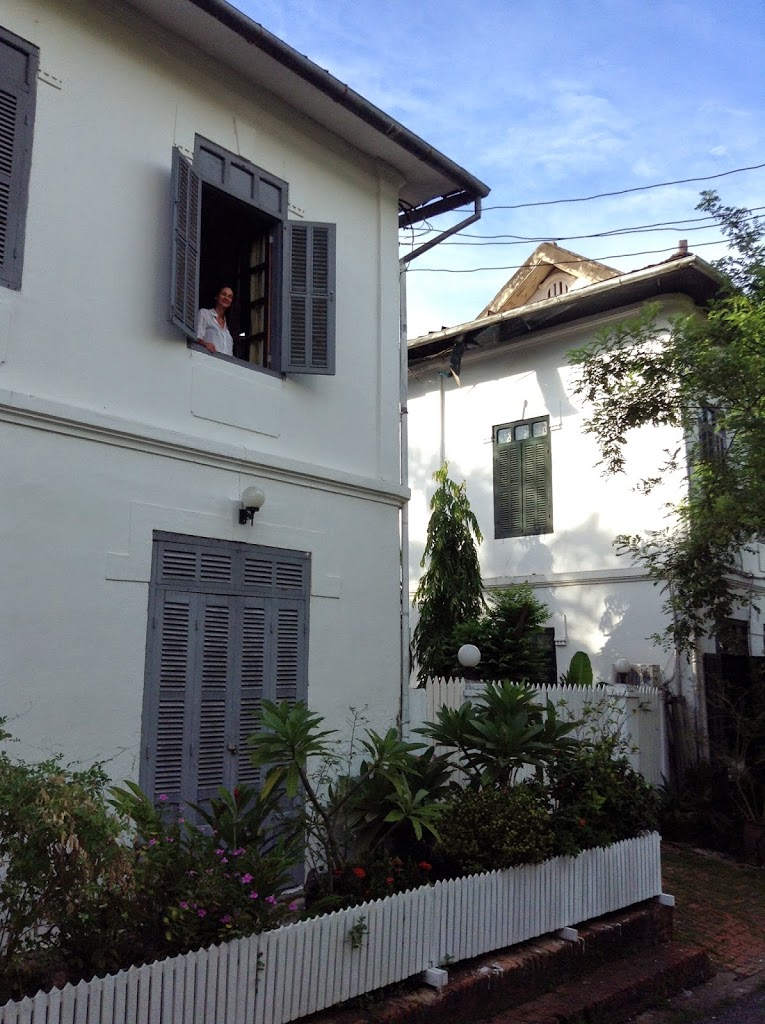 |
| We were able to negotiate a good price for the corner room – spacious, quiet and great light and air flow. |
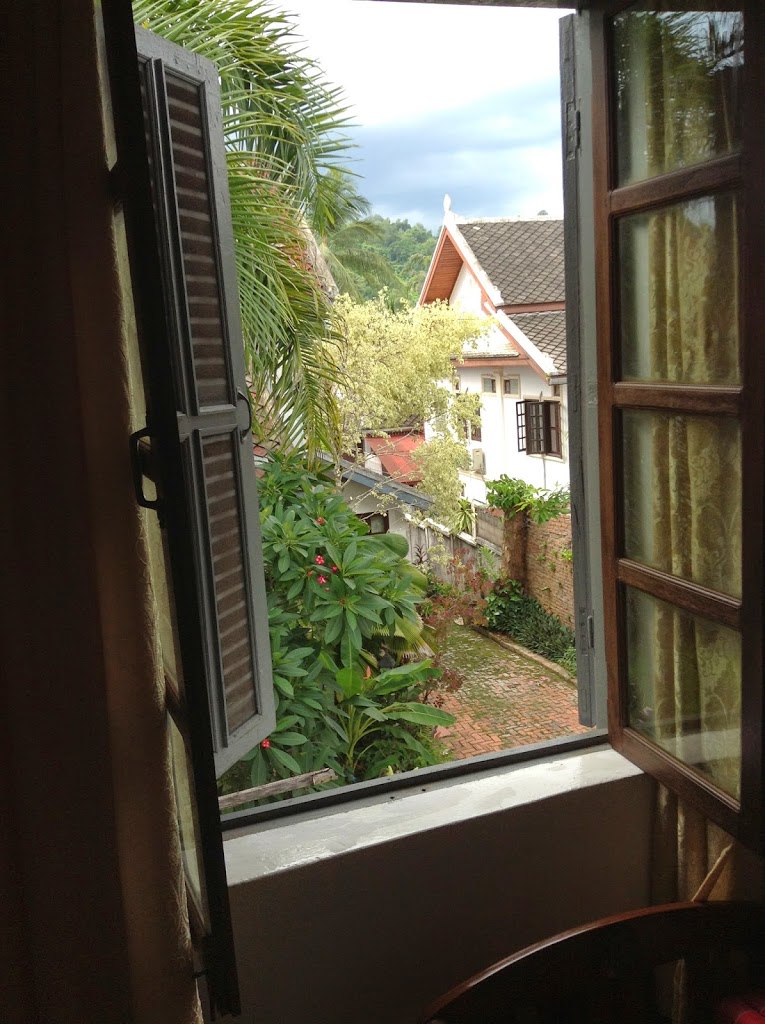 |
| The view from the sitting area of our room – could be in France… |
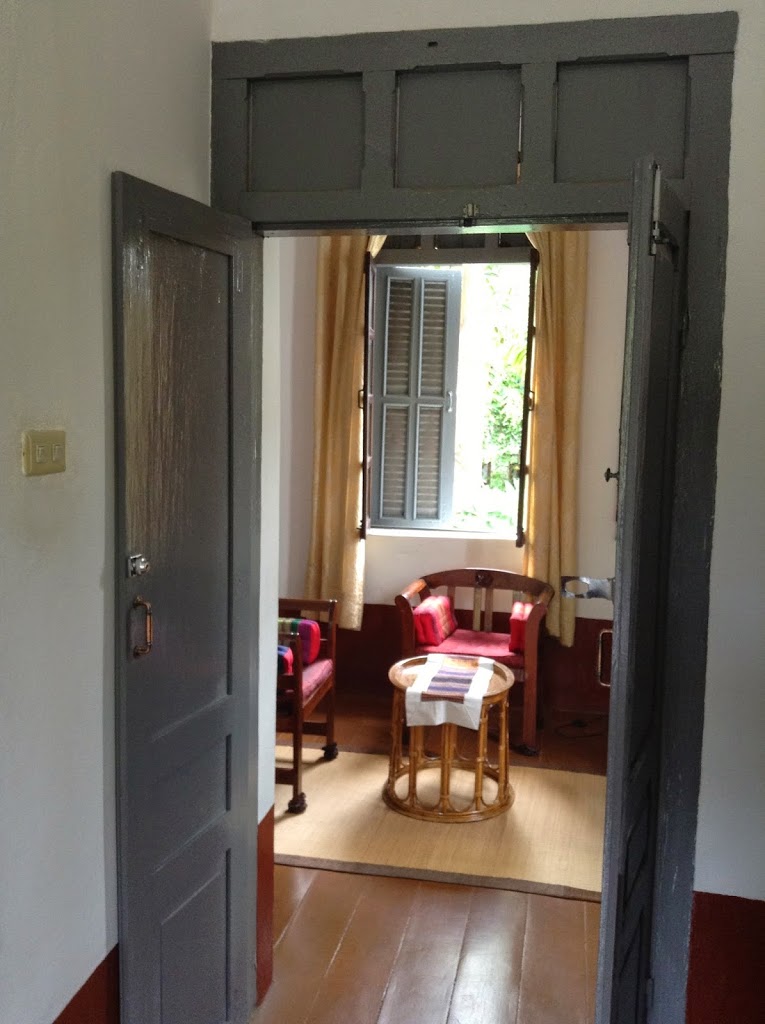 |
| This extra room is perfect as an office and place to paing, adjacent to our bedroom. |
Beside its rich portfolio of French and Lanna buildings, as the spiritual heart of Laos, Luang Prabang is augmented by magnificent Buddhist temples. Luang Prabang’s multi tiered, temple roofs sweep very low, almost reaching the ground in some instances. The Lao are fond of saying that the roof line resembles the wings of a mother hen guarding her chicks.
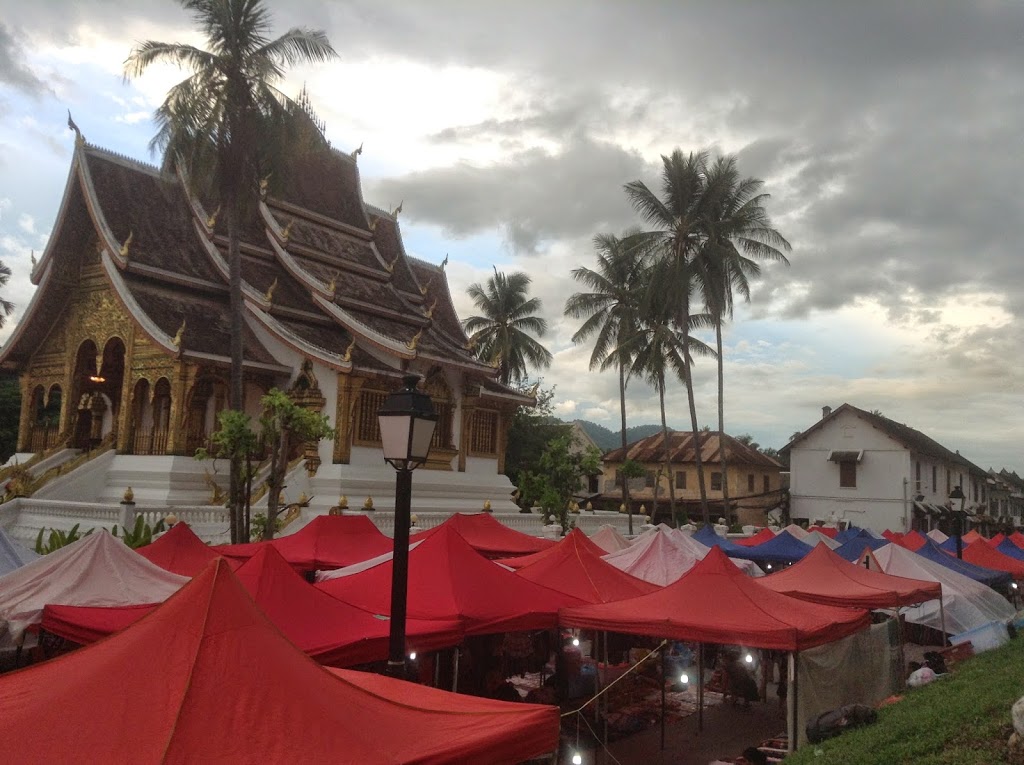 |
| The town of Luang Prabang has 32 Wats. This one, Wat Ho Pha Bang, “Temple of the Golden City” is the backdrop for a night market where ethnic hill tribe people come to sell their craft. |
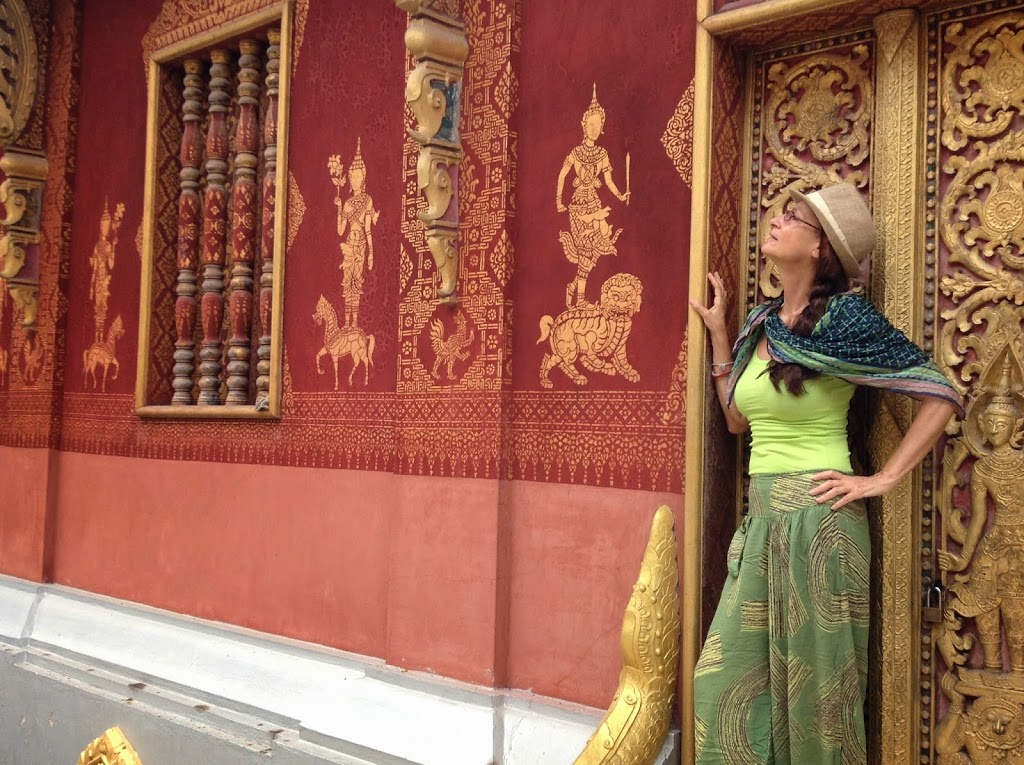 |
| It is difficult not to be awed by the artistic talent showcased inside and outside the temples. |
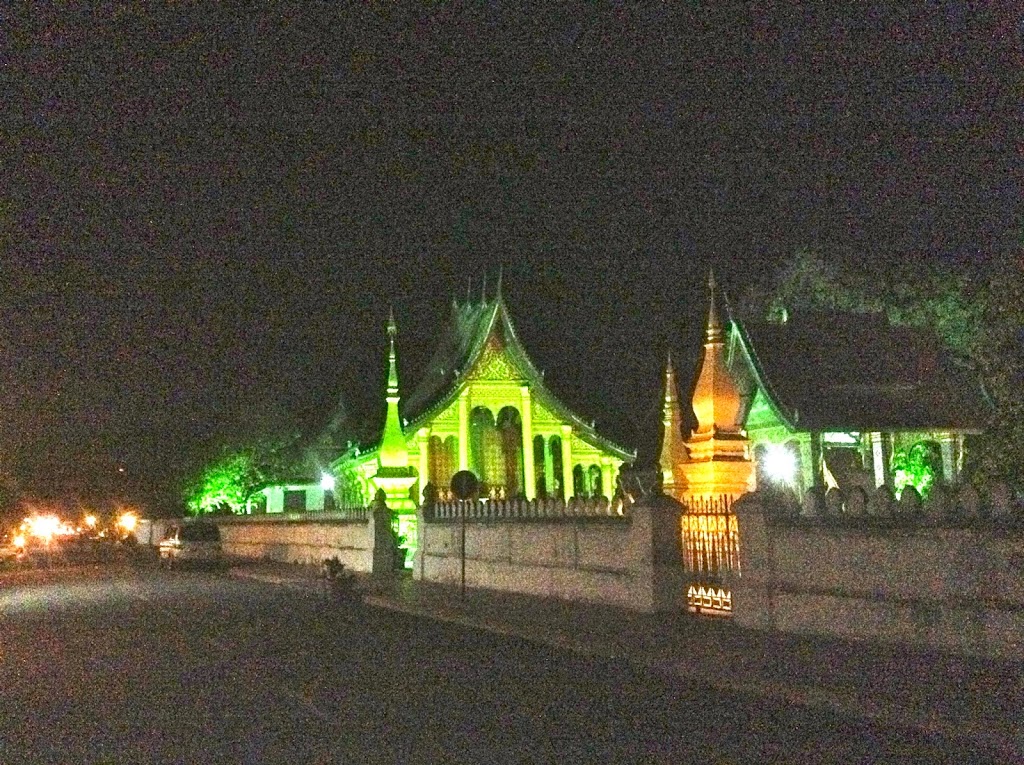 |
| The cool evening breeze makes for a pleasant stroll. Many temples are lit up and open at night and are very accessible from the streets. |
How do you like our new neighborhood so far?
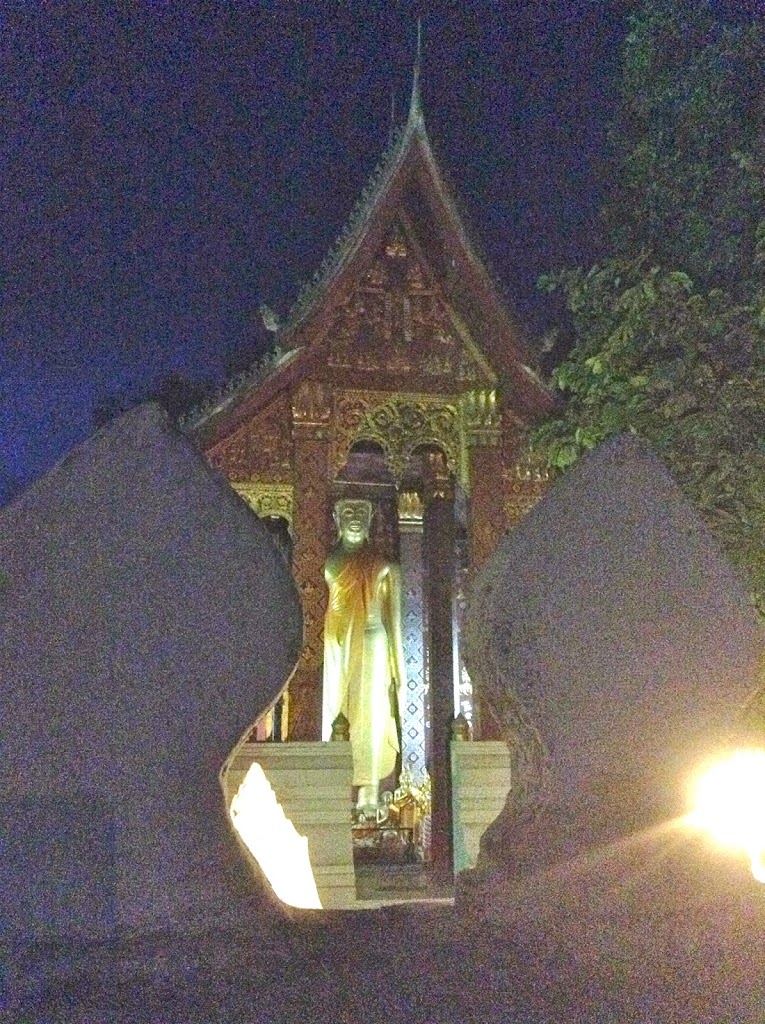 |
| A tall Buddha sculpture inside a temple, seen through the wall from the street. |
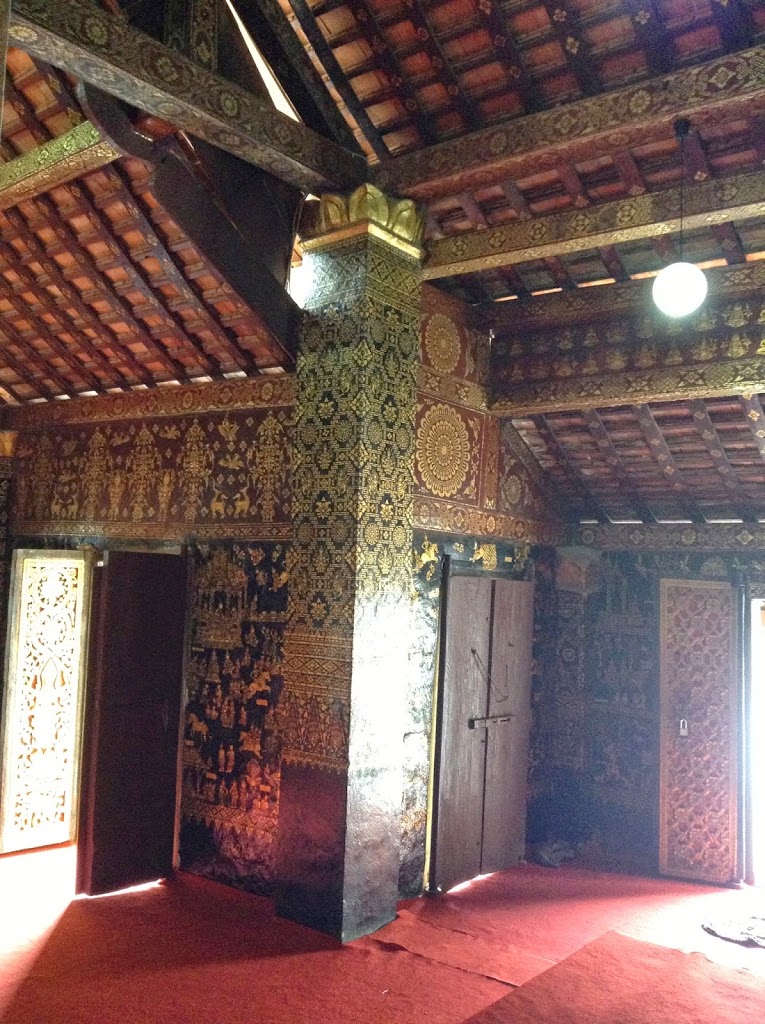 |
| The gold leaf painting found on the exterior walls is also found floor to ceiling at this temple. |
 |
| As we stroll from one Wat to another, it becomes increasingly clear why Luang Prabang became known as “The Golden City”. |
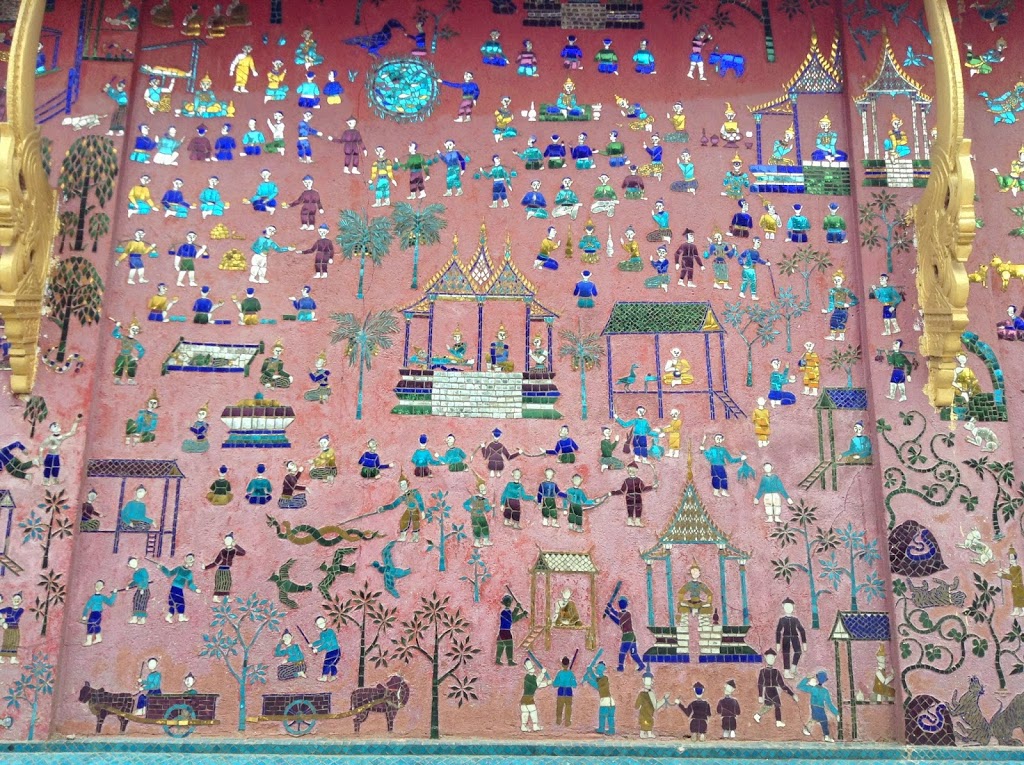 |
| This very unusual style of decoration makes Wat Xieng Thong, a city favorite. Several of the temple’s small buildings are covered, floor to ceiling, with extra-ordinarily bright mirror-shard mosaic, depicting local village life. |
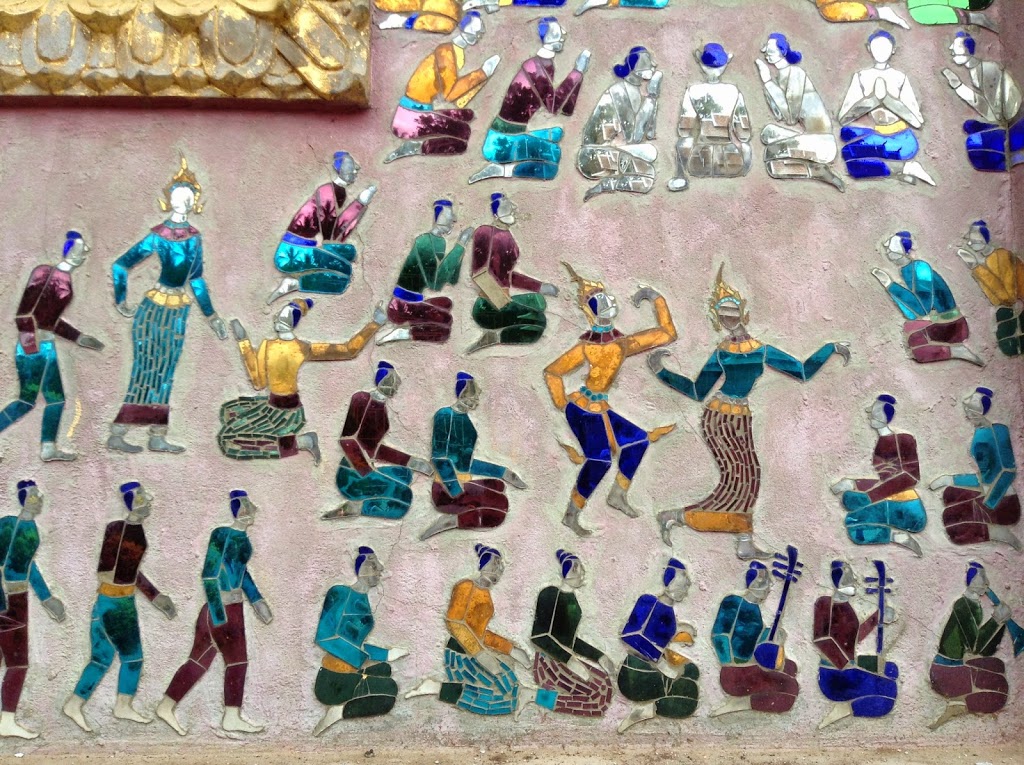 |
| Up close to the details of this very unique mirror mosaic decoration. |
 |
| Everyday life captured on this mosaic at the turn of the last Century. Note the pond, the house, the boat. Also the beautiful turquoise mosaic at the base. |
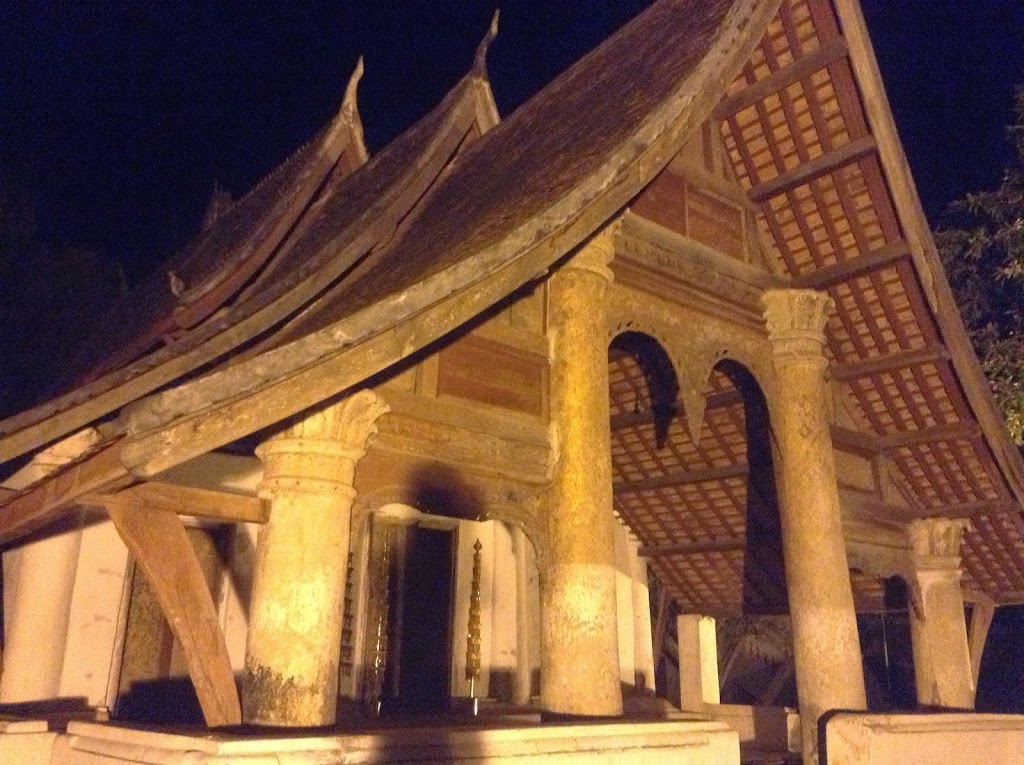 |
| Another turn on an evening walk, another stunning example of Lanna wooden temple architecture. |
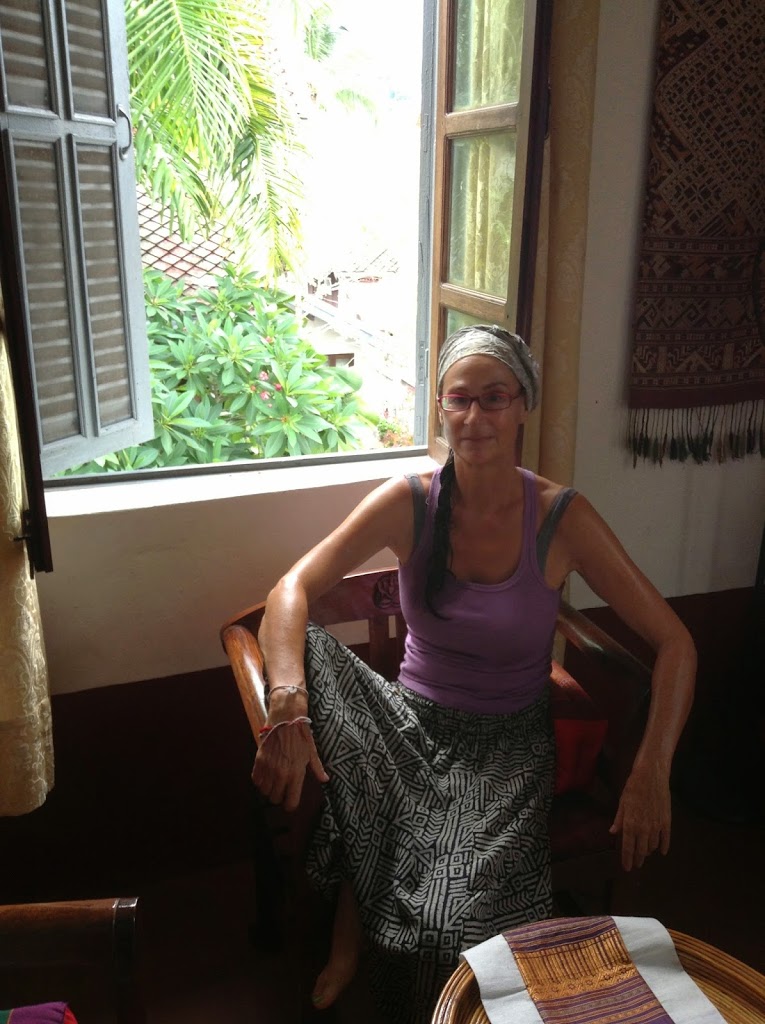 |
| Enjoying our new nest! |
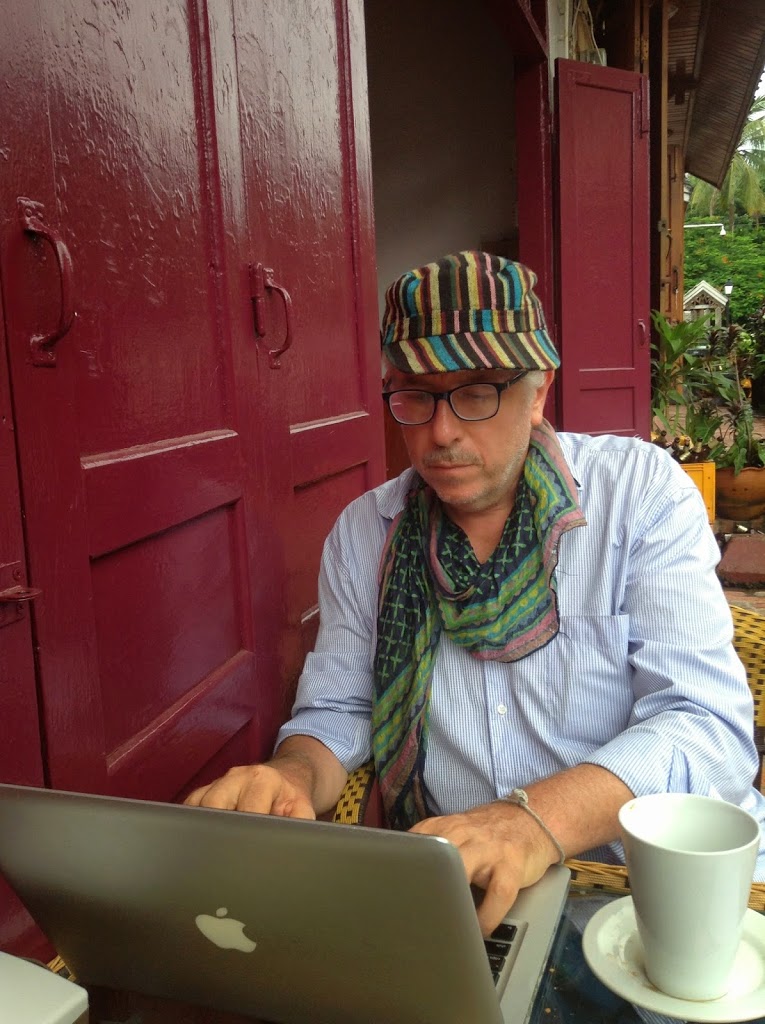 |
| Ben is already at home. He is balancing some research required for his UN consultancy and taking in the slow rhythm of our new home base, at a laid back, Loatian tempo. |




























Beautiful pics – I love the mosaic. All the best in your new home
Roch!! Great that you are reading the blog and enjoying. I love the mosaic too, it is so unique! Thanks. Coming to visit us?
This place is very beautiful..Yellow and blue..my favorite colors…But I would not want to bath in these dirty waters!!!!!
JB: these waters, i.e. the Mekong and Sam Han rivers are not dirty, the ochre color comes from the sand and sediment. However, there is an amazing WATERFALL, crystal clear and beautiful turquoise color – Blog entry coming soon.
Your new home? How long will you be living here? Indefinite?
Yes, our new home… for now. Just as we did not know how long we would stay in Nicaragua (turned out to be 6 years in total), the length of our living here will be a function of how our professional track pans out. If we stay with the current model of providing consulting in the field of Climate Change, then Luang Prabang will be our base. Time will tell. As Buddha says “There is no past, there is no future, only the present moment exists”.